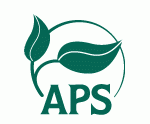

 Laboratory Life
by
Bruno Latour; Steve Woolgar; Jonas Salk (Introduction by)
Laboratory Life
by
Bruno Latour; Steve Woolgar; Jonas Salk (Introduction by)
 Science in Action
by
Bruno Latour
Science in Action
by
Bruno Latour
Once you've determined your topic - it's time to dig in and discover just what it's all about... In the sciences, a great place to start is with general subject-based reference encyclopedias and credible online resources. You will want to "get a feel" for how your topic is studied, what sub-disciplines (great source for keywords!) focus on it, and a Wikipedia-like comprehension of its nature.
Using the WSU Libraries Catalog, search for biological science reference resources to find entries and information on your topic. There are multiple ways to do this: subject searches, title searches and advanced keyword searching. Below is a list of suggested titles in the catalog you may want to utilize:
SmartSearch Advanced Search - this multi-disciplinary discovery tool searches through many databases at once [*note: filter by source type "Reference"]
 Grzimek's Animal Life Encyclopedia
by
Norman Macleod (Editor)
Grzimek's Animal Life Encyclopedia
by
Norman Macleod (Editor)
 Ethology : what animals do and why
by
Igor Akimushkin
Ethology : what animals do and why
by
Igor Akimushkin
 Plant Life
by
D. M. Moore (Editor)
Plant Life
by
D. M. Moore (Editor)
Dictionary of Genetics by Robert C. King




An interactive encyclopedia of life-forms worldwide.
Animal Diversity Web (ADW) is an online resource of animal natural history, distribution, classification, and conservation biology at the University of Michigan
An interactive reference work covering animal species worldwide.
Includes a Guide to Animal Names and Nomenclature Glossary, as well as access to digital resources for scientific researchers.
Contains animated and computer-enhanced images of living cells and organisms that are useful for education and medical research.
CSHL is a private, non-profit institution with research programs in cancer, neuroscience, plant biology, genomics, and bioinformatics and a broad educational mission. Links to a variety of research and education resources.
Holds information on such current environmental research areas as: air science, climate change, ecosystems, health science, land and waste cleanup, pesticides, toxic substances, sustainable practices, and water science.
From the national Acadmies. Free access to books, reports, and additional resources on evolution education and research.
A searchable database of field guides for plants, animals, and other objects in North America and around the world.
A compilation of the Internet Pubic Libary (IPL) and the Librarian's Internet Index (LII) websites, provides browsable, reliable subject-specific websites. here set to search for Internet sites focusing on Life Sciences.
Information hub for the United States Department of Agriculture (USDA). Users can access articles, reports, bibliographies, and laws & regulations.
he PLANTS Database provides standardized information about the vascular plants, mosses, liverworts, hornworts, and lichens of the U.S. and its territories. Hosted by the USDA.
Provides taxonomic, conservation status and distribution information on plants and animals that have been globally evaluated to determine the relative risk of extinction, the main purpose of the IUCN (International Union for Conservation of Nature) Red List being to catalogue and highlight those plants and animals that are facing a higher risk of global extinction.
By Nature Publishing Group. Focuses on cell biology, including the topics of evolution, gene expression, and the rich complexity of cellular processes shared by living organisms. Scitable also offers resources for the student scientist, with advice about effective science communication and career paths.
CITING SOURCES IN CSE/CBE STYLE
Chapter in Edited Volume (Encyclopedias, Textbooks):
Chapter or other part of a book, same author(s)
Gawande A. 2010. The checklist manifesto: how to get things right. New York (NY): Metropolitan Books. Chapter 3, The end of the master builder; p. 48–71.
Chapter or other part of a book, different authors
Rapley R. 2010. Recombinant DNA and genetic analysis. In: Wilson K, Walker J, editors. Principles and techniques of biochemistry and molecular biology. 7th ed. New York (NY): Cambridge University Press. p. 195–262.
Wikipedia Articles:
Wikipedia contributors. Brassica rapa [Internet]. Wikipedia, The Free Encyclopedia; 2015 Dec 22, 01:53 UTC [cited 2015 Dec 29]. Available from: https://en.wikipedia.org/w/index.php?title=Brassica_rapa&oldid=696274353.
Internet Resources:
Format for end reference:
Title of Homepage. Date of publication. Edition. Place of publication: publisher; [date updated; date accessed]. Notes.
If no date of publication can be determined, use a copyright date (if available), preceded by “c”. Include the URL in the notes.
APSnet: plant pathology online. c1994–2005. St Paul (MN): American Phytopathological Association; [accessed 2005 Jun 20]. http://www.apsnet.org/.



